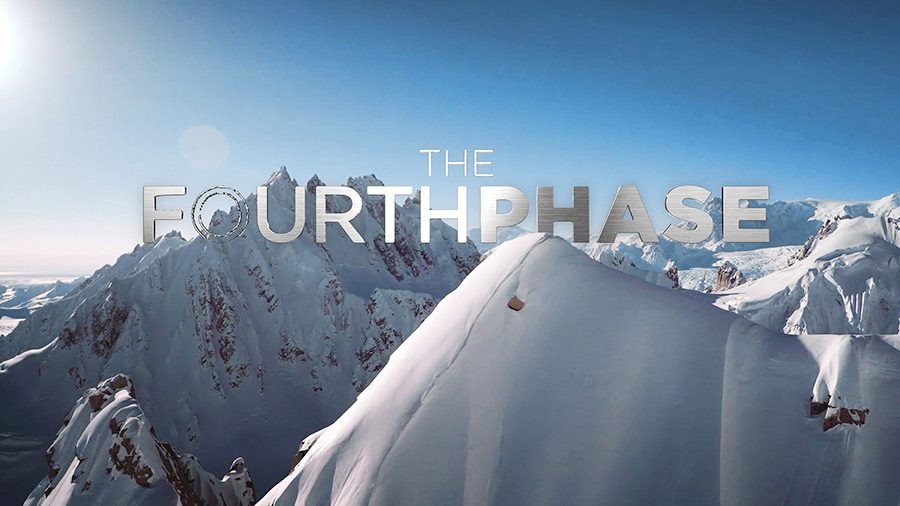Following the cycle in “The Fourth Phase”
After nearly three years in the making, professional snowboarder Travis Rice’s highly anticipated snowboarding film, “The Fourth Phase,” directed by Jon Klaczkiewicz, has finally arrived.
The movie was filmed in Rice’s backyard of Wyoming and in Japan, Russia and Alaska. Red Bull Media House and Brain Farm Cinemas have easily met expectations with the final product of “The Fourth Phase,” following the team’s previous 2011 prominent snowboarding film, “The Art of Flight.”
The difference that distinguishes “The Art of Flight” from “The Fourth Phase” is the two geographical stories behind them. In “The Art of Flight,” the Brain Farm crew set out to create a film that showcased snowboarding in some of the world’s unchartered terrain. In “The Fourth Phase,” the crew sets out to document Rice’s idea of following the North Pacific hydrological cycle, also known as the Gyre’s Flow.
What sets any of the Brain Farm, Travis Rice and Red Bull films apart from the majority of other snowboarding films is how they try to place more context behind the film, as opposed to creating a snowboarding music video. It all started with the collaboration’s first film way back in 2008 titled, “That’s It, That’s All.”
Along with Rice, “The Fourth Phase” casts professional snowboarders Mikkel Bang, Shin Biyajima, Ben Ferguson, Cam FitzPatrick, Bryan Iguchi, Eric Jackson, Jeremy Jones, Mark Landvik, Victor de Le Rue, Bode Merrill and Pat Moore.
The film is all brought together visually with beautiful cinematography that does a wonderful job at capturing each breathtaking environment that is presented in the film. The film hosts everything from high depth Cineflex landscape shots to simple high definition GoPro point of view shots.
Like any other Travis Rice flick, “The Fourth Phase” presents a nice variety of ups and downs that come with their wild and unique snowboarding journeys, from the perfectly stomped tricks that come with ideal filming conditions to having to deal with delayed filming progress due to injuries and non-cooperative weather.
Considering the big motto of the film, “This process we follow, this cycle we ride,” the team successfully manages to follow the pacific hydrological cycle, but several delaying bumps in the road force the crew to take a couple of takes at certain locations the following year.
For people, like me, who have a passion for watching snowboarding films for really clean, creative, backcountry tricks, any Jackson Wyoming segment in each of the three Brain Farm, Travis Rice collaborations is bound to please us the most.
Sure, the whole idea of more content being added to a snowboard film is definitely more appealing to me nowadays when compared to another modern snowboard film that consists of a bunch of riders crushing it to some sweet tunes. However, these types of scenes really are what make a snowboarding film a snowboarding film for a lot of viewers.
This is naturally due to the history of snowboarding films, since the first time someone slapped together an edit. Now just picture these compositional styles being created with the world’s best backcountry snowboarders and the best snowboarding and action sports camera people and equipment, and you will have the Jackson, Wyo., segment of “The Fourth Phase.”
There is no shortage of exciting moments in any of the other scenes in the film, but when you view the Jackson segments in these films, you just witness each and every rider involved in them having a blast and stomping down some of the gnarliest and smoothest big air maneuvers in snowboarding to date.
If you have already seen “The Art of Flight,” you may notice that in “The Fourth Phase” there seems to be slightly less snowboarding and more storytelling. Though this is the case, it definitely should not make the film any less significant when presented in the snowboard community. It is simply a one-of-a-kind film that anyone will be able to appreciate in one fashion or another.
With the soundtrack consisting of artists like Foals, M83, Porter Robinson and Other Lives, “The Fourth Phase’s” seemingly calming cinematic presentation is completed.
The film appears to be everything it was intended to be in terms of documenting snowboarding around the north pacific hydrological cycle, but if there was anything that might have added to the film as a whole, it would have been a little more snowboarding.
Altogether, if you are trying to get a little extra dose of hype for the upcoming snowboarding season or you are looking into a very well captured modern snowboarding documentary, checking out “The Fourth Phase” is definitely not a bad idea.
For more any information about “The Fourth Phase” and purchasing options, you can visit thefourthphase.com.






